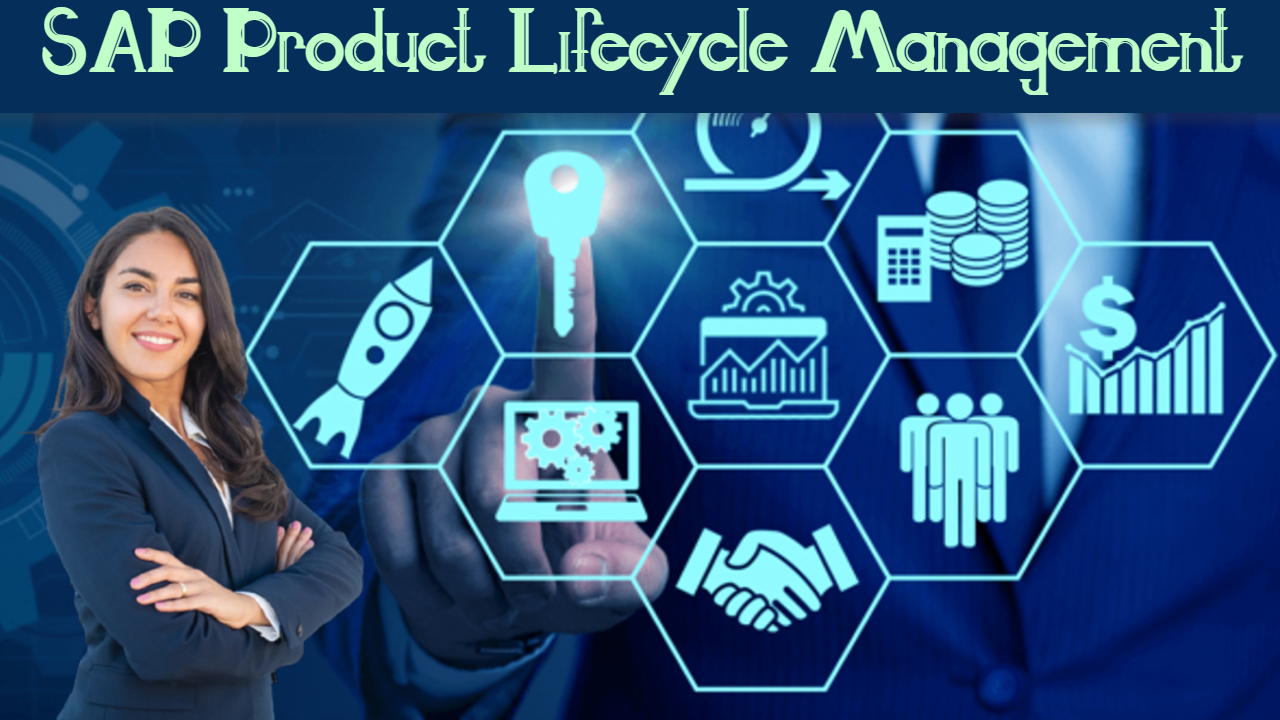SAP Product Lifecycle Management: A Game-Changer or Just Another Hype?
In today’s highly competitive business landscape, companies are continually seeking ways to optimize their operations, enhance product quality, and accelerate time-to-market. One critical aspect of achieving these goals is efficient product lifecycle management (PLM). SAP Product Lifecycle Management (SAP PLM) is a comprehensive solution that empowers organizations to streamline and integrate all phases of the product lifecycle, from ideation and design to manufacturing and maintenance. In this 2000-word informative content piece, we will explore SAP PLM in depth, understanding its key components, benefits, and how it is transforming businesses across industries.
What is SAP Product Lifecycle Management (PLM)?
SAP PLM is a software solution offered by SAP, a leading enterprise software company, designed to support the entire product lifecycle within an organization. It integrates data, processes, business systems, and people across the product development and management continuum. SAP PLM is not limited to a particular industry; rather, it is versatile and can be customized to meet the unique needs of various sectors, including manufacturing, automotive, aerospace, consumer goods, and more.
Key Components of SAP PLM
SAP PLM encompasses various modules and functionalities that cater to different stages of the product lifecycle. Here are some of its key components:
Product Data Management (PDM): PDM is at the core of SAP PLM, allowing organizations to centralize and manage product-related information, including CAD drawings, specifications, bills of materials (BOMs), and documentation. This ensures that everyone involved has access to accurate and up-to-date data.
Product Structure Management: This module helps in creating and managing complex product structures, enabling organizations to understand the relationships between different components and sub-assemblies, a crucial aspect in manufacturing and engineering.
Portfolio and Project Management: SAP PLM facilitates the planning and execution of product development projects. It helps in aligning projects with business objectives, tracking progress, managing resources, and mitigating risks.
Quality Management: Quality is a non-negotiable aspect in product development. SAP PLM offers tools for defining quality standards, conducting inspections, and managing non-conformances to ensure that products meet or exceed customer expectations.
Document Management: Efficient document management is crucial for compliance and traceability. SAP PLM enables secure storage, version control, and retrieval of documents related to products and processes.
Collaboration: Collaboration is key in modern product development. SAP PLM provides collaboration tools that allow teams, including remote and global teams, to work together seamlessly.
Manufacturing Integration and Intelligence: This component helps in synchronizing product design with manufacturing processes, optimizing production, and gaining insights into manufacturing operations for continuous improvement.
Environmental Compliance and Sustainability: As sustainability becomes a more significant concern for businesses, SAP PLM supports compliance with environmental regulations and helps in tracking the environmental impact of products.
Benefits of Implementing SAP PLM
The adoption of SAP PLM can bring a multitude of benefits to organizations, regardless of their size or industry. Here are some of the key advantages:
- Improved Efficiency – One of the primary goals of SAP PLM is to streamline processes and reduce manual interventions. This leads to improved efficiency throughout the product lifecycle, from design to manufacturing. By centralizing data and automating workflows, companies can minimize errors, reduce lead times, and enhance resource utilization.
- Enhanced Collaboration – SAP PLM fosters collaboration by providing a platform where cross-functional teams can work together seamlessly. Engineers, designers, suppliers, and other stakeholders can collaborate in real-time, leading to faster decision-making and fewer communication gaps.
- Faster Time-to-Market – In today’s fast-paced business environment, getting products to market quickly is critical. SAP PLM accelerates product development by optimizing processes, enabling concurrent engineering, and ensuring that the right information is available to decision-makers when needed.
- Cost Reduction – Efficiency improvements, reduced errors, and better resource utilization all contribute to cost reduction. SAP PLM helps in controlling costs by minimizing waste, optimizing resource allocation, and reducing the need for rework.
- Regulatory Compliance – Many industries are subject to stringent regulatory requirements. SAP PLM helps organizations stay compliant by providing tools to track and manage regulatory data and documentation. This reduces the risk of non-compliance penalties.
- Innovation – Innovation is at the heart of product development. SAP PLM encourages innovation by providing a platform where ideas can be captured, evaluated, and developed into viable products. It also supports the integration of emerging technologies such as AI and IoT into product design and development.
- Better Product Quality – By enforcing strict quality control processes and ensuring that product specifications are met, SAP PLM contributes to improved product quality. This, in turn, enhances customer satisfaction and reduces costly product recalls.
- Sustainability – As sustainability becomes a key concern for businesses and consumers alike, SAP PLM helps organizations track and manage the environmental impact of their products. This includes materials sourcing, energy consumption, and waste reduction.
Implementing SAP PLM
Implementing SAP PLM is a significant undertaking that requires careful planning and execution. Here are the key steps involved in the implementation process:
- Needs Assessment – The first step is to assess your organization’s specific needs and objectives. This includes understanding your current processes, pain points, and areas for improvement. It’s crucial to involve key stakeholders from various departments in this assessment.
- Solution Selection – Based on your needs assessment, you can select the appropriate SAP PLM modules and configurations. SAP offers a range of options to cater to different industries and business sizes.
- Customization – SAP PLM is highly customizable to fit the unique requirements of your organization. Customization involves configuring the software to align with your existing processes and workflows.
- Data Migration – Migrating existing product data and documentation to SAP PLM is a critical step. This should be done carefully to ensure data integrity and accuracy.
- Training – Proper training is essential to ensure that your team can effectively use SAP PLM. SAP provides training resources and certifications to help users become proficient in the software.
- Testing – Before fully deploying SAP PLM, it’s important to conduct thorough testing to identify and address any issues or glitches.
- Deployment – Once testing is successful, you can deploy SAP PLM across your organization. This should be done in a phased approach to minimize disruption.
- Continuous Improvement – SAP PLM is not a one-time implementation; it’s an ongoing process. Regularly evaluate its performance, gather feedback from users, and make necessary improvements.
Real-World Applications of SAP PLM
SAP PLM has found applications across various industries, transforming the way companies manage their product lifecycles:
- Automotive Industry – In the automotive sector, SAP PLM helps manufacturers design and produce vehicles more efficiently. It facilitates collaboration between design teams and suppliers, resulting in faster time-to-market and improved vehicle quality.
- Aerospace and Defense – Aerospace and defense companies use SAP PLM to manage complex product structures and meet strict regulatory requirements. It ensures that aircraft and defense systems are designed, manufactured, and maintained to the highest standards.
- Consumer Goods – Consumer goods companies leverage SAP PLM to introduce new products to the market rapidly. It also helps in managing the formulation and compliance of products such as cosmetics and food items.
- Pharmaceutical and Healthcare – In the pharmaceutical industry, SAP PLM supports drug development, ensuring that medications meet regulatory standards and are brought to market efficiently. It also plays a crucial role in medical device manufacturing.
- Industrial Machinery and Equipment – Manufacturers of industrial machinery and equipment use SAP PLM to optimize their design and production processes. This results in more reliable and cost-effective machinery.
Future Trends in SAP PLM
As technology evolves and businesses continue to adapt, several trends are shaping the future of SAP PLM:
- Integration with Emerging Technologies – SAP PLM is increasingly integrating with emerging technologies such as artificial intelligence (AI), machine learning, and the Internet of Things (IoT). This allows for more advanced analytics, predictive maintenance, and smarter decision-making throughout the product lifecycle.
- Cloud-Based PLM – Cloud-based PLM solutions are gaining popularity due to their scalability and accessibility. SAP offers cloud-based options, allowing organizations to benefit from PLM without the need for extensive IT infrastructure.
- Sustainability and ESG – Environmental, Social, and Governance (ESG) considerations are becoming central to product development. SAP PLM is evolving to support ESG initiatives by providing tools to track and manage sustainability metrics.
- Enhanced User Experience – Improving the user experience is a constant focus for software developers. SAP is investing in making its PLM solutions more user-friendly, with intuitive interfaces and mobile capabilities.
Conclusion
In a world where innovation, efficiency, and quality are paramount, SAP PLM stands as a cornerstone for businesses seeking to manage their product lifecycles effectively. It streamlines processes, fosters collaboration, ensures compliance, and empowers organizations to stay competitive and sustainable in a rapidly changing market. Whether in automotive, aerospace, consumer goods, or any other industry, SAP PLM continues to drive positive transformation, enabling businesses to bring their ideas to life while exceeding customer expectations. As we look to the future, the integration of emerging technologies and a focus on sustainability will only further enhance the value of SAP PLM in the ever-evolving world of product development and management.







